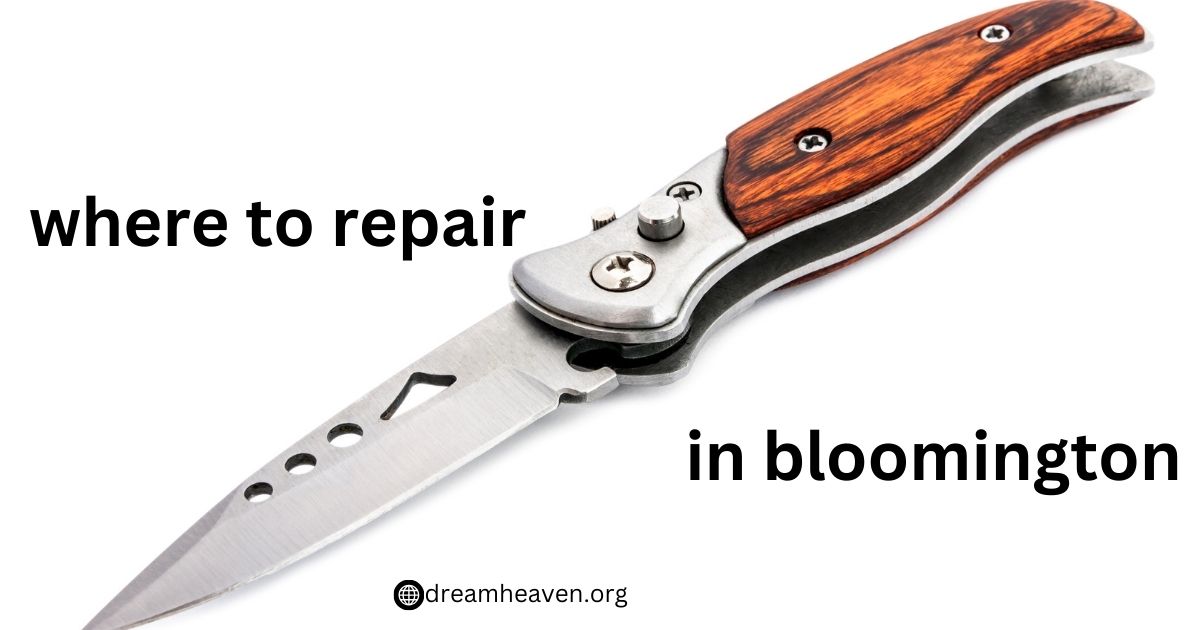where to repair pocket knife in bloomington are timeless tools, revered for their functionality and durability. Whether you’re a collector, outdoor enthusiast, or just someone who values utility, proper care and repair of your pocket knife is crucial. This guide delves into detailed steps, tips, and insights to keep your pocket knife in top-notch condition.
Understanding the Importance of Pocket Knife Maintenance
A pocket knife is more than a blade; it’s an investment. Regular maintenance ensures longevity, preserves its functionality, and enhances safety. A dull or damaged knife not only underperforms but can also pose risks during use.
Recognizing Signs of Damage
Blade Dullness
A knife should cut effortlessly. If it struggles with basic tasks like slicing paper or cutting rope, it’s time for sharpening.
Loose or Stiff Hinges
Hinges that are too loose may cause accidental closures, while stiff ones make the knife difficult to open. Both conditions indicate a need for adjustment or lubrication.
Damaged Handle
Cracked, chipped, or uncomfortable handles can affect grip and usability. Handle repairs or replacements restore comfort and safety.
Rust or Corrosion
Exposure to moisture can lead to rust, compromising the blade’s integrity. Regular cleaning and oiling prevent this issue.
Tools Required for Pocket Knife Repair
Sharpening Stone or Rod: Essential for honing the blade.
Lubricant: Prevents rust and ensures smooth hinge movement.
Screwdrivers: For tightening or replacing screws.
Cleaning Brush: Removes dirt and debris from crevices.
Replacement Parts: Includes screws, springs, or handle materials.
Cleaning Your Pocket Knife
Cleaning is the foundation of maintenance. Here’s how to do it:
Disassemble (if possible): Carefully separate the components to access hard-to-reach areas.
Soak in Warm Soapy Water: This loosens dirt and grime. Avoid soaking for too long to prevent rust.
Scrub Gently: Use a small brush to clean the blade and handle.
Dry Thoroughly: Wipe with a soft cloth and allow components to air dry.
Sharpening the Blade
A sharp blade enhances functionality and reduces the risk of accidents. Follow these steps:
Select the Right Sharpening Tool: Use a whetstone, ceramic rod, or sharpening system.
Set the Angle: Most pocket knives are sharpened at a 20-degree angle.
Stroke Consistently: Move the blade across the stone in a sweeping motion, maintaining even pressure.
Test the Sharpness: Slice through paper or shave a small section of hair to check the blade’s edge.
Lubricating Hinges and Blade
Lubrication ensures smooth operation and prevents rust.
Choose the Right Lubricant: where to repair pocket knife in bloomington Look for products designed for knives, such as mineral oil.
Apply Sparingly: A drop or two is sufficient.
Work the Lubricant In: Open and close the knife multiple times to distribute the oil evenly.
Tightening and Adjusting Screws
Loose screws compromise stability, while overtight screws hinder movement.
Inspect All Screws: Use the appropriate screwdriver to tighten or replace them as needed.
Adjust Hinges: If the blade feels stiff or loose, fine-tune the hinge screws until the knife operates smoothly.
Repairing or Replacing the Handle
Handles endure significant wear and tear. Here’s how to restore them:
Clean the Surface: Remove any dirt or residue.
Patch Minor Cracks: Use epoxy or wood filler for small damages.
Replace Severely Damaged Handles: Remove the old handle and attach a new one using screws or adhesive.
Removing Rust and Corrosion
Rust is a common issue, especially for knives exposed to moisture.
Use a Rust Eraser or Fine Sandpaper: Gently rub the affected area.
Apply Vinegar: Soak the blade in vinegar for stubborn rust spots.
Polish the Blade: Finish with a metal polish to restore shine and protection.
Storing Your Pocket Knife
Proper storage prevents damage and extends the knife’s lifespan.
Choose a Dry Location: Avoid humid areas that promote rust.
Use Protective Cases: Store in a sheath or pouch to prevent scratches.
Regular Inspections: Check your knife periodically for signs of damage or rust.
When to Seek Professional Help
Some repairs, like replacing springs or extensive handle restoration, require expert intervention. Look for professional knife repair services if:
The blade is chipped or severely damaged.
The locking mechanism is malfunctioning.
Custom repairs are needed for antique or high-value knives.
Tips for Long-Term Knife Care
Avoid Overuse: Use your knife for its intended purposes only.
Regular Maintenance: Clean, sharpen, and lubricate your knife frequently.
Be Gentle: Avoid forcing the blade or hinges beyond their limits.
Invest in Quality Tools: Proper tools make maintenance easier and more effective.
Conclusion
where to repair pocket knife in bloomington is a reliable companion, whether for outdoor adventures, daily tasks, or emergency situations. By following the steps outlined above, you can keep your knife in peak condition and extend its lifespan significantly. Regular care not only preserves its functionality but also ensures it remains a safe and effective tool.
FAQs
1. How often should I clean my pocket knife?
Clean your knife after every use, especially if it’s exposed to moisture or dirt.
2. Can I sharpen a pocket knife with household items?
While specialized tools are best, a ceramic mug or fine-grit sandpaper can work in a pinch.
3. How do I know if my knife needs professional repair?
If the damage involves intricate parts like springs or locking mechanisms, seek expert help.
4. What’s the best lubricant for pocket knives?
Mineral oil or knife-specific lubricants are ideal for preventing rust and ensuring smooth operation.
5. Can I use my pocket knife for prying or hammering?
No, misuse can damage the blade or hinges. Always use the knife for its intended purposes.

